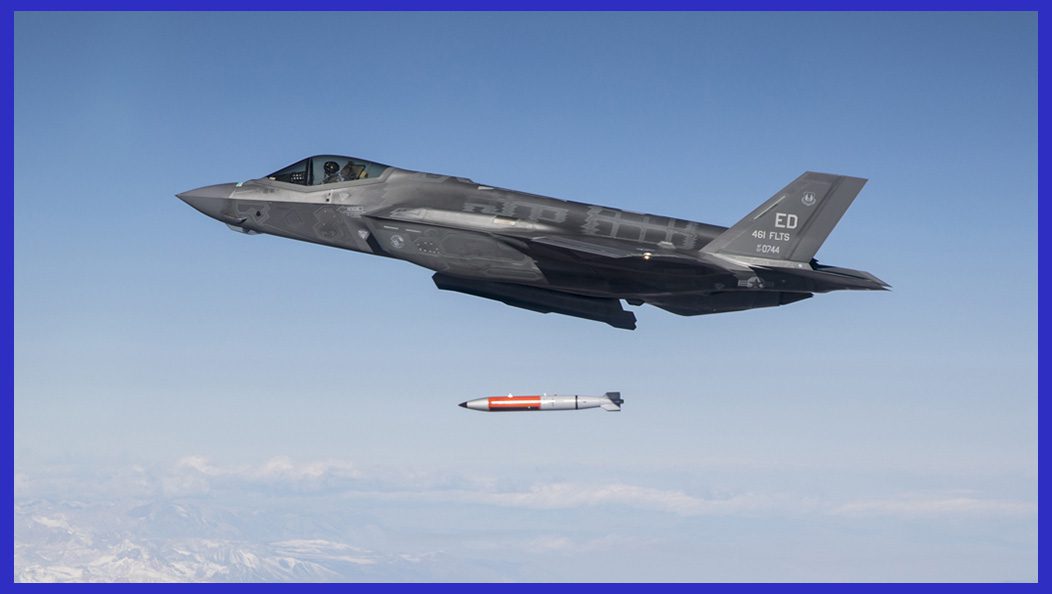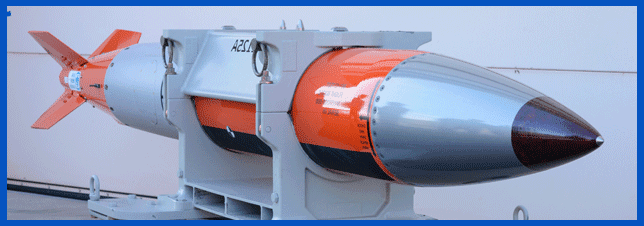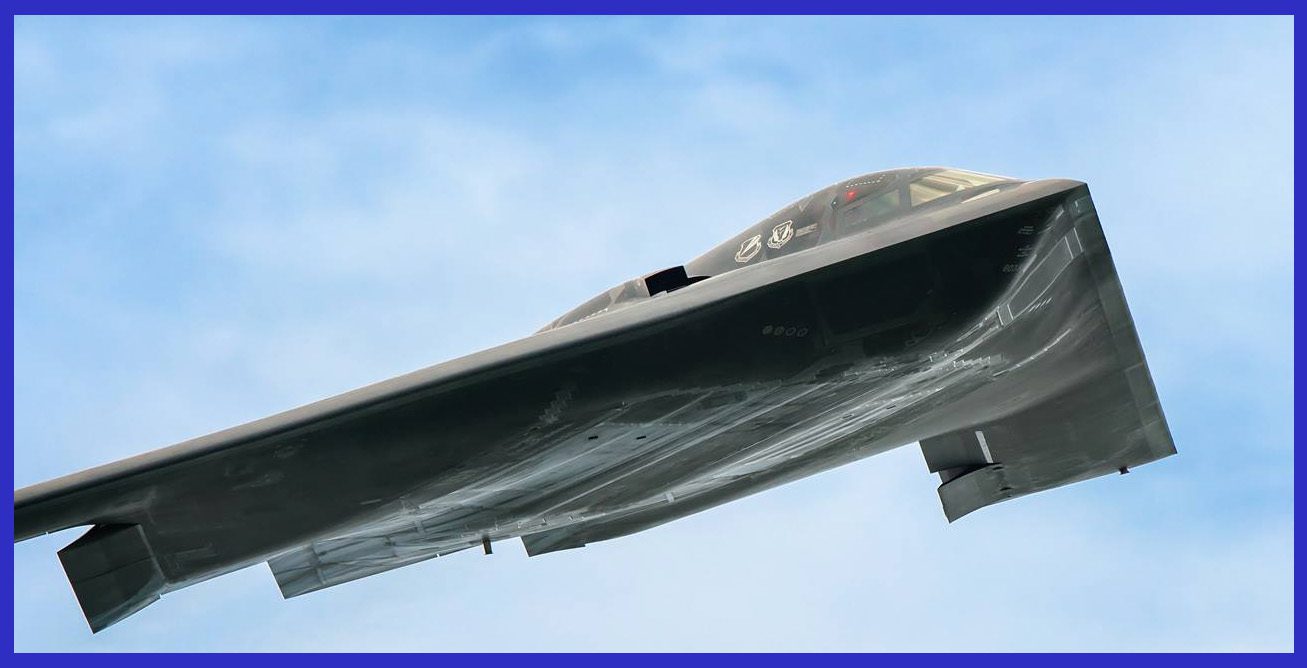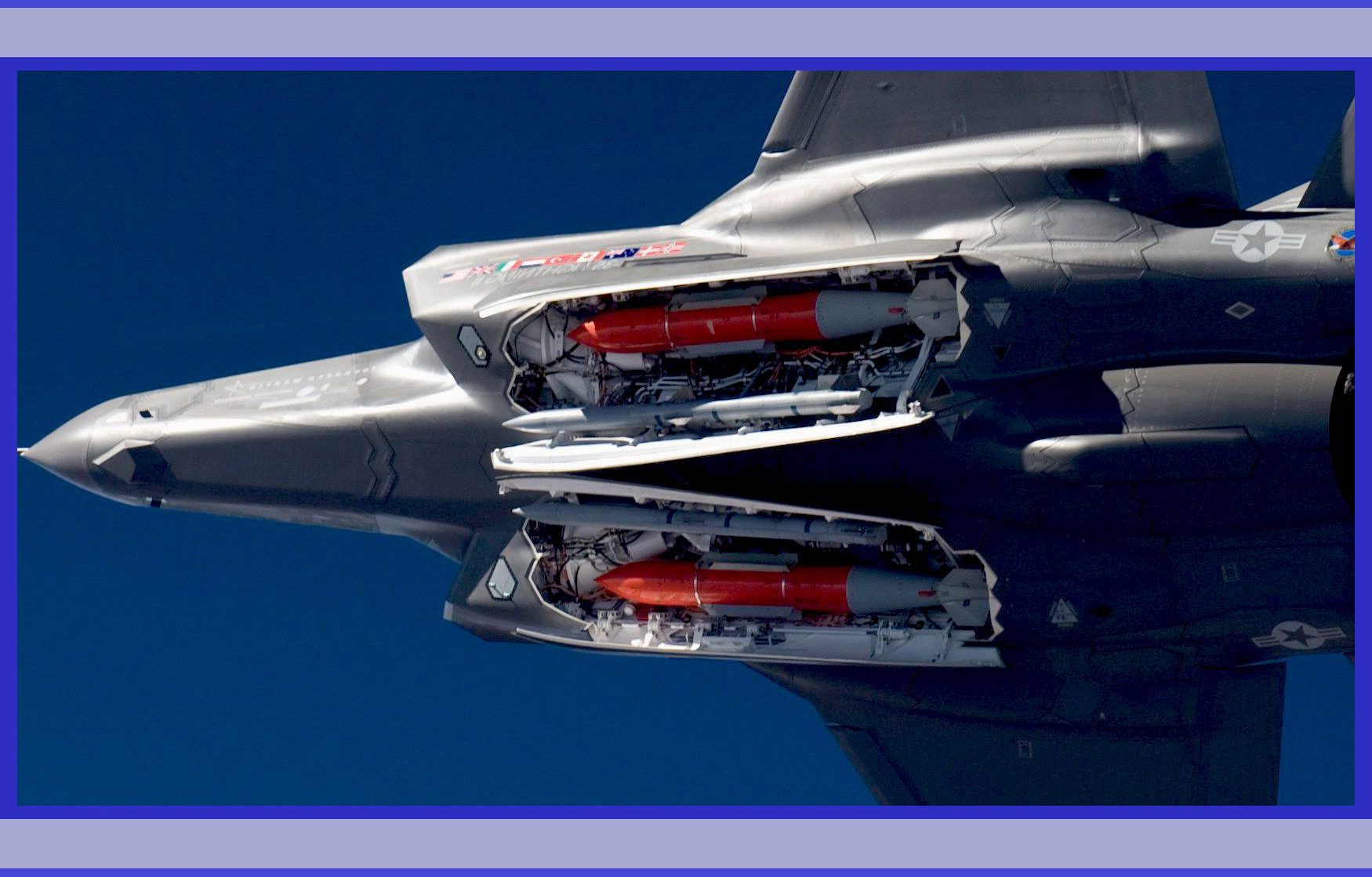During the peak of the Cold War era, spanning from 1963 to 1970, the United States designed a compact-sized thermonuclear gravity bomb that continues to be in active service as of 2023 and beyond, incorporating the latest modifications. So, let’s explore the best of the B61 and B83 Nuclear Bombs, which were developed as low to intermediate-yield strategic and tactical nuclear weapons, boasting a remarkable two-stage radiation implosion design. The overall concept aimed to create a highly adaptable and reliable weapon that could effectively deter potential threats and provide military options in various operational scenarios.

Let’s First Delve into the intricacies of the B61
The B61 nuclear bomb is a strategic and tactical gravity bomb expertly developed by the United States. It stands as a versatile and highly adaptable weapon, skillfully designed to be efficiently deployed by aircraft-based platforms. With its variable yield capability, it offers an extensive range of explosive power options, spanning from 0.3 kt (low kiloton) to 400 kt high levels, as found in its various modifications. This Full Fuzing Option (FUFO) weapon is equipped with a comprehensive array of fuzing and delivery options, encompassing air and ground burst fuzing, as well as free-fall, retarded free-fall, and laydown delivery alternatives.
Impressively, the B61 weapon exhibits the remarkable capability of being released at speeds of up to Mach 2 and flying at altitudes as low as 50 feet (15 m). This feature serves as a testament to the exceptional durability of its streamlined casing during supersonic flights. It is worth noting that the B61 is currently in the process of undergoing its 12th modification, aptly named the B61-12, which commenced in 2020. The Federation of American Scientists report from 2012 anticipates that around 400 bombs will undergo refitting, with each unit estimated to cost $28 million.
The B61 boasts advanced safety and security mechanisms that not only enable precise control but also ensure reliable operation. These impressive attributes contribute to its effectiveness as a weapon system. It incorporates a wide range of cutting-edge technologies aimed at enhancing accuracy and target penetration, including both inertial and GPS-based guidance systems. Undoubtedly, as a vital component of America’s nuclear deterrent, the B61 plays an exceptionally significant role in the nation’s comprehensive defence strategy.

The Concept Behind the Development of the B61 Nuclear Bomb
The development of the B61 nuclear bomb was influenced by several crucial concepts and strategic considerations. A primary focus was to create a versatile and flexible nuclear weapon suitable for deployment in various military scenarios. The B61 was intentionally designed to be adaptable, featuring adjustable yields ranging from low to high levels of explosive power. This adaptability provided the advantage of precisely tailoring its destructive capabilities to suit specific targets and operational requirements.
During the early stages, a report in 1961 revealed the Navy and Air Force’s interest in a lightweight bomb to replace existing weapons. Subsequently, the development of the weapon that would eventually become the B61 received authorization in December 1962. The program’s justification centred on modernizing the nuclear arsenal, enhancing aircraft capabilities, and streamlining the nuclear weapons inventory by replacing lower-yield versions of the B28 and B43 nuclear bombs.
During the testing phase, engineers added spin motors to the weapon, generating a spin rate of 5 revolutions per second. The primary objective of this modification was to enhance stability and decoupling during high-speed delivery. In addition to the original design, three alternative options were explored. However, the development of two alternatives was halted due to reasons that remain classified. Specifically, the first alternative was deemed too similar to the original TX-61 design, while the Department of Defense expressed disfavour towards the second option, ultimately leading to its abandonment.
In May 1964, the TX-61 design received a directive to “proceed along the lines” of the third alternative. However, the precise implications of this instruction are not entirely clear. Subsequently, based on the foundation of TX-61, the B61 underwent 13 different versions known as Mod 0 through Mod 12. Among these versions, nine have entered production, all sharing the same physics package while offering distinct yield options. Notably, the most recent variant, the Mod 11, was deployed in 1997, and it serves as a ground-penetrating bunker-busting weapon.
Another critical concept driving the development of the B61 was its dual-purpose nature. This weapon was intentionally designed to serve both as a strategic deterrent, effectively dissuading potential adversaries, and as a tactical weapon suitable for battlefield deployment. The B61’s dual-purpose capability allows it to be utilized by both strategic bombers and tactical aircraft, providing a diverse range of deployment options.

Key Points of the Development of the B61 Nuclear Bomb
- Versatility: The B61 was designed to be a versatile weapon, capable of fulfilling both strategic and tactical roles. Its adjustable yield options allowed for tailored responses to different target types and operational requirements.
- Flexibility: The B61’s development aimed to create a flexible weapon system that could be deployed by a range of platforms, including strategic bombers and tactical aircraft.
- Safety and Security: Significant emphasis was placed on developing robust safety and security features for the B61. Advanced mechanisms were incorporated to prevent unauthorized access and accidental detonation, ensuring the weapon’s reliability and minimizing the risk of unintended consequences.
- Guidance Technology: The B61 incorporated advanced guidance systems to improve accuracy and target penetration. The integration of both inertial and GPS-based guidance technology enhanced precision, enabling more effective targeting and reduced collateral damage.
- Operational Effectiveness: The B61’s development focused on maximizing its operational effectiveness. This involved extensive testing, evaluation, and refinement to ensure the weapon’s reliability, survivability, and overall performance in real-world scenarios.
- Deterrence Capability: The B61 was developed as a critical component of the United States’ nuclear deterrent strategy. Its design aimed to project a credible deterrence posture, discouraging potential adversaries from hostile actions by demonstrating the country’s nuclear capabilities.
- Cost and Logistics: Considerations of cost-effectiveness and logistical feasibility played a role in the B61’s development. The weapon was designed to be compatible with existing delivery systems and infrastructure, minimizing the need for extensive modifications and reducing overall program costs.
Overall, the development of the B61 nuclear bomb encompassed factors such as versatility, flexibility, safety, guidance technology, operational effectiveness, deterrence, cost, and collaboration. These points were crucial in creating a reliable, adaptable, and strategically significant weapon for the United States.

The Design Analysis of the B61 Nuclear Bomb
The design of the B61 nuclear bomb was undertaken by the Los Alamos National Laboratory situated in New Mexico. The production engineering phase commenced in 1965, resulting in the acceptance of the first war-reserve B61-0 weapon by the AEC in December 1966. However, in May 1967, production temporarily ceased to allow for crucial design modifications. Once the necessary adjustments were implemented, production resumed in January 1968.
After a comprehensive approach, considering factors such as size, weight, performance, safety, and delivery options, the B61 nuclear bomb underwent multiple modifications and upgrades over the years. The following outlines its general design principles:
Physical Characteristics: The B61 is a cylindrical-shaped bomb with a length of approximately 11 feet (3.4 meters) and a diameter of about 13.5 inches (34.3 centimetres), weighing approximately 715 pounds (324 kg). This versatile weapon serves as a variable yield dual-use tactical and strategic bomb, equipped with the Full Fuzing Option (FUFO), specifically designed for external carriage by high-speed aircraft. Its streamlined casing enables it to withstand supersonic flight, and it is constructed from high-strength materials, ensuring durability to endure the extreme forces experienced during deployment and detonation.
Variable Yield Capability: One of the key design features of the B61 is its variable yield capability. By adjusting the bomb’s internal components, its explosive power can be varied from a few kilotons up to hundreds of kilotons, offering a wide range of destructive capabilities.

Ground operations: The B61, a highly sophisticated nuclear bomb, is carefully armed by dedicated ground-based personnel. Access to its internal mechanisms is granted through an access panel thoughtfully situated on the side of the bomb. Upon opening this panel, one would find an arrangement of nine dials, two sockets, and a T-handle that serves as the manual trigger for the “command disable” function.
Among these components, one of the sockets serves as a receptacle for the MC4142 “strike enable” plug. The insertion of this crucial plug is imperative as it completes critical circuits within the safety/arming and firing mechanisms, ensuring the bomb’s readiness for deployment.
Another socket features the PAL (Permissive Action Link) connector, a vital security measure. This connector houses 23 pins, each uniquely marked with alphabetic letter codes, adding an extra layer of complexity to its arming process and enhancing overall security. The intricate design of the B61 showcases the precision and meticulousness put into its construction, making it a remarkable feat of engineering and military technology.

Delivery Options: The B61 is designed to be compatible with a variety of delivery platforms, including strategic bombers, tactical aircraft, and ground-based systems. It can be released from high altitudes or delivered at low levels for specific mission requirements.
Fusing and Safety Mechanisms: The B61 incorporates sophisticated fusing and safety mechanisms to prevent accidental detonation and unauthorized use. Arming and saving devices keep the bomb inert until it receives necessary signals. It offers versatility, being set for airburst or groundburst detonation, with delivery options like free fall, retarded free fall, or laydown delivery using a parachute to slow it down during release.
- Parachute Retarder: Only the Mod 0 to 10 B61 versions have a parachute retarder, serving two vital purposes. It allows the aircraft to escape the blast in retarded delivery modes and the bomb to survive ground impact in laydown delivery. The B61 can be released at speeds up to Mach 2, showcasing its exceptional capabilities. In one laydown mode, it detonates 31 seconds after release.
- Mod 11 Advancement: The Mod 11 is a remarkable advancement, a hardened penetration bomb with a reinforced casing and a delayed-action fuze. It penetrates meters into the ground before detonating, damaging fortified structures underground. Introduced in 1997, about 50 Mod 11 bombs have been produced, primarily carried by the B-2 Spirit, showcasing advanced technology integration in modern military operations.

Guidance and Targeting: Advanced guidance systems play a crucial role in the B61’s accuracy and effectiveness. Initially relying on inertial guidance, later versions integrated GPS technology to enhance precision and enable more reliable targeting.
Enhanced Safety Measures: Throughout the design process, engineers and scientists devoted relentless efforts to enhance safety features. Their improvements involved implementing advanced fire-resistant coatings and measures to bolster the bomb’s resilience against adverse environmental conditions. The specified requirements were comprehensive, encompassing an extensive temperature range from −60 °F (−51 °C) to 160 °F (71 °C), the ability to endure shocks of up to 40g, and a capability to withstand in-flight temperatures of up to 275 °F (135 °C) for durations of up to 60 minutes.
Furthermore, specific parameters were carefully established for parachute deployment to achieve a maximum load of 255 g (2,500 m/s^2). These meticulously designed considerations played a pivotal role in endowing the B61 with remarkable durability and enabling it to execute its functions effectively under a wide array of demanding operational circumstances.
Upgrades and Modernization: Over time, the B61 underwent several life extension programs (LEPs) and modernization efforts to maintain its effectiveness and meet evolving security standards. These upgrades often included the incorporation of new technologies and safety improvements.
Overall, the B61 has remained an essential component of the U.S. nuclear arsenal, embodying advancements in nuclear weapon technology and strategic deterrence concepts. Its design reflects the commitment to ensuring the weapon’s reliability, safety, and capability to address a range of potential threats.
Variants of the B61 Mods: A Diverse Arsenal
The B61 is equipped with 13 variants, known as “Mod 0 through Mod 13”. Among these, Mod 3, Mod 4, Mod 7, Mod 11, and Mod 12 are presently part of the Active stockpile, while the remaining variants have either been retired or never progressed into production. The B61 Mod 12 LEP (Life Extension Program) exemplifies the United States’ dedication to upholding a dependable and credible nuclear deterrent amidst a constantly evolving global security landscape.

About The B61 Mod 12
The Mod 12 upgrade is being explored as a forward-deployed tactical/strategic nuclear weapon to defend NATO and Asian partners. Additionally, the F-35 and B-21 Raider will be armed with them. The Mod 12 is more adaptable and has fewer side effects, thanks to its lower yield alternatives. It is hoped that recapitalizing the B61 will result in the retirement of the B83, thus eliminating the last megaton-yield American bomb and leaving the B61-series as the sole American gravity nuclear weapon. The Mod 12 only needs a 50-kiloton payload to hit a target at a distance of 30 meters. According to experts, increased accuracy would enhance the weapon and expand the range of targets it may be used against.
Compared to the older Mod 3/4 models now in use in the area, the Mod 12 update is more effective because of its improved precision. Electronic compatibility issues prevent F-16 and Tornado aircraft from interacting with the new bomb, but NATO nations that have the F-35 will be able to employ it. An inert Mod 12 underwent its initial flight test in 2015, and a second successful test took place in August 2017.
The Mod 12 lacks the reinforced structure required to function as an earth-penetrating weapon, a capacity reserved for the Mod 11, which will continue to be used for ground-penetrating missions. This is a key distinction to make. In 2018, the Mod 12 Life Extension Program was conducted successfully, including two non-nuclear system qualification flight tests at the Tonopah Test Range. After undergoing 11 months of testing, with a flawless 100% success rate for all 31 bomb drops, the Mod 12 guided tail-kit assembly (TKA) received approval for Milestone C, allowing it to move into the production phase during the same year.
In June 2020, the B61-12 nuclear bomb successfully completed its flight tests aboard an F-15E aircraft from the US Air Force, being dropped from an altitude exceeding 25,000 feet. The first B61-Mod12 bomb was manufactured in November 2021. While the weapon gradually replaces the B61 mod 3, mod 4, and mod 7 bombs, the B61-11 bomb, renowned for its extraordinary earth penetration capacity, will continue to be maintained in the stockpile. Overall, the development and implementation of this program involve collaboration among various government agencies, laboratories, and military commands to ensure the successful modernization of this critical component of the U.S. nuclear arsenal.

About The B61 Mod 13
A comprehensive programme created to guarantee the security and dependability of the US nuclear arsenal is the Stockpile Stewardship and Management Plan, administered by the National Nuclear Security Administration (NNSA). According to this plan, the B61 Mod 13 Life Extension Programme (LEP) is projected to enter Phase 1 development in 2037, and the weapon is expected to be produced for the first time by 2050. This bold plan demonstrates how the NNSA is committed to protecting the security and efficacy of the B61 Mod 13 nuclear bomb.
As of the most recent article in Popular Science, dated October 31, 2023, the Pentagon is in the process of developing a nuclear “gravity bomb.” This represents an upgrade to the existing B61 Mod 13, and it is projected to possess 24 times the potency of the bombs that were famously detonated over Hiroshima and Nagasaki during World War II. It’s important to note that the intention behind this development is to replace a portion of the current nuclear stockpile, rather than increasing it. This initiative is driven by the imperative to address the mounting threats posed by potential adversaries.
Now, Let’s Delve into the B83 Nuclear Bomb
The B83 nuclear bomb is a high-yield strategic thermonuclear weapon developed by the United States in the late 1970s and entered service in 1983. It is one of the most powerful and destructive nuclear bombs in the U.S. nuclear arsenal as of 2023. The B83 nuclear bomb is a powerful strategic thermonuclear weapon, boasting a variable yield gravity bomb from 0.3 kilotons to 1.2 megatons.
With a two-stage design, it combines fission and fusion reactions for a devastating impact. Weighing around 2,400 pounds, it is deployed by bombers like the B-2 and B-52, serving as a deterrent against potential adversaries. Subject to life extension programs, the B83 remains a significant element of the U.S. nuclear arsenal, playing a crucial role in strategic calculations and nuclear deterrence policies.

The Design of the B83 Nuclear Bomb
Advanced Design: The B83 is a thermonuclear weapon with two stages. It produces a substantially larger yield than pure fission bombs because it employs a first fission stage to start a secondary fusion stage. To ensure the durability and functionality of this sophisticated design, substantial testing and research were required. The B28, B43, and B53 were some of the early weapons that the B83 replaced. It was the first nuclear weapon developed by the United States that used “insensitive explosives” in the trigger lens system from the beginning to prevent inadvertent detonation.
Delivery Systems Integration: Strategic bombers like the B-2 Spirit and the B-52 Stratofortress were intended to deliver the B83. Integration with different delivery systems needed a lot of engineering and coordination work. To make the bomb nose-heavy, the warhead is positioned in the forward portion of the weapon, similar to the smaller B61. It was designed for delivery at either a high or low altitude and high-speed transportation (up to Mach 2.0). The bomb features a parachute retardation system with a 46-foot Kevlar ribbon parachute that can decelerate quickly for the latter duty. It can be used for ground- or air-burst detonation in free-fall, retarded, contact, and laydown modes.
Security and safety: It is crucial to ensure the safety and security of nuclear weapons. Advanced safety systems were installed in the B83 to guard against unauthorized use and inadvertent detonation. Throughout its creation and implementation, stringent security protocols were used. The weapon is tactically ineffective without a nuclear yield, thanks to security features including a command disablement system (CDS) and a next-generation permissive action link (PAL). A Category “D” Permissive Action Link (PAL) that guards the weapon prevents it from being activated or detonated without the right permission.
Life Extension Programs: The B83 has undergone several life extension programs (LEPs) over the years to increase safety features, prolong service life, and replace ageing components. These LEPs were designed to maintain the weapon’s dependability and efficiency. A total of 650 B83s were produced, and they are still in use as a part of the American “Enduring Stockpile.” However, the B83 is currently the greatest-yield nuclear weapon in the U.S. arsenal after the last B53 bomb was destroyed in 2011. As a result, the Biden administration announced its intention to retire the B83 in 2022, while particular information regarding the number of retirements is still classified.

Technical Specifications of the B61 and B83 Nuclear Bombs
- Weight(mass): B-61_ 324 kg ( 715 lb ) / B-83_ 1,100 kg ( 2,400 lb )
- Length: B-61_ 11.8 ft ( 3.60 m ) / B-83_ 12 ft ( 3.65 m )
- Diameter/Width: B-61_ 13.3 in / B-83_ 18 in
- Blast yield: B-61_ 0.3 to 400 kt / B-83_ 1.2 Megatonnes
- Accuracy: Estimated within 30 meters of CEP
- Launch Platform: A variety of all major US military aircraft, including the B-1 Lancer, B-2 Spirit, B-52 Stratofortress, F/A-18 Hornet, F-15E Strike Eagle, F-16 Fighting Falcon, F-35 Lightning II, and F-22 Raptor, have been integrated to deliver the weapon. Specifically the B83, it can be delivered by the B-1 Lancer, B-2 Spirit, B-52 Stratofortress, and shortly, the B-21 Raider.

In conclusion, The B61 and B83 nuclear bombs represent remarkable achievements in nuclear weapon design and technology. The B61’s versatility, dual-purpose capability, and advanced guidance systems make it a crucial element of both strategic and tactical operations. Meanwhile, the B83’s high yield, variable options, and robust design position it as a potent strategic deterrent with the ability to tackle hardened enemy targets.
Both bombs underwent rigorous development, safety enhancements, and life extension programs, reflecting the United States’ commitment to maintaining a credible nuclear deterrent. As part of the nation’s arsenal, the B61 and B83 underscore the delicate balance between maintaining strategic capabilities and addressing arms control considerations in the complex landscape of global security and deterrence.

Important Announcement for Our Valued Readers!
After an article is published, it is possible that updates or changes may have occurred beyond the time of publication. Therefore, it is important to be aware that certain information in the article might be outdated. To ensure the most accurate analysis, it is highly recommended to verify the content with the latest sources available.
However, we are dedicated to delivering outstanding articles on military products and global updates. Maintaining quality and smooth operation requires resources. Your support sustains our efforts in providing insightful content. By purchasing high-quality products through our affiliated links, you help us keep our platform alive and acquire top-notch items. Your unwavering support is invaluable and inspires us to strive further.
We welcome your suggestions and requests for more information, as we value feedback from our readers. If there’s specific defence material or equipment not covered on our site, please share your request in the comments. We’ll strive to research and provide the required information. We sincerely thank you for your unwavering interest in our website, and we eagerly anticipate hearing from you! Enjoy your reading experience!

1 thought on “Let’s Explore the Best of the B61 and B83 Nuclear Bombs”